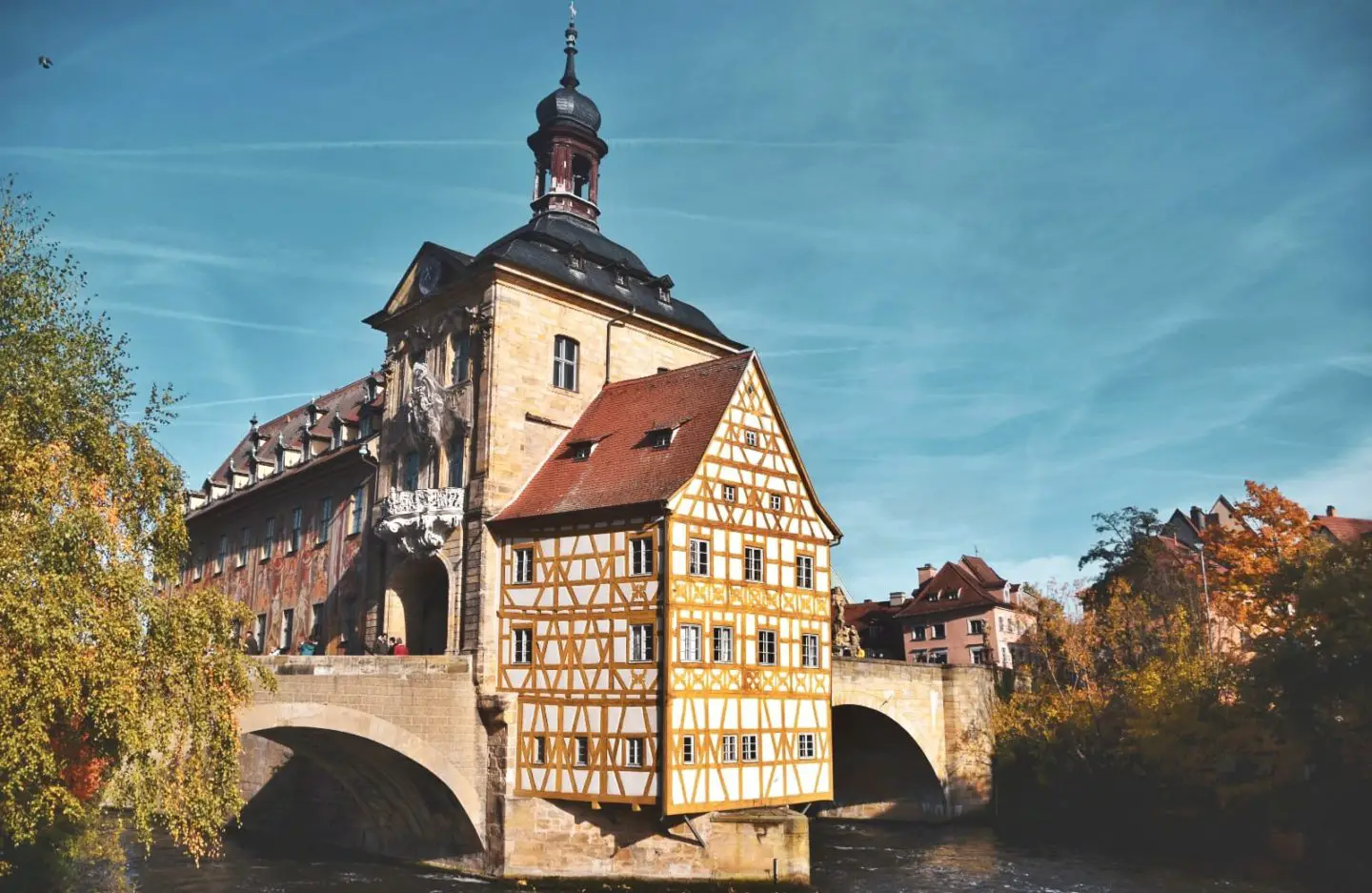
Looking for the best things to do in Bamberg? Here is the ultimate Bamberg guide to help you plan a perfect day in one of the most scenic Franconian towns.
Bamberg, an enchanting Bavarian town in Germany, offers a plethora of things to do, making it a must-visit destination in Germany. The town’s exceptional layout, remarkably preserved medieval and baroque architecture and gracefully intersecting flowing rivers, adds an extra touch of scenic allure, earning it recognition as a UNESCO World Heritage Site. Moreover, Bamberg is renowned worldwide for its remarkable beer culture, boasting an impressive collection of nine breweries and a centuries-old brewing tradition that has stood the test of time, making it a true paradise for beer enthusiasts. Whether you’re captivated by its architectural beauty, cultural heritage, or vibrant beer scene, Bamberg offers a delightful experience for visitors of all interests.
Table of Contents
The ultimate Bamberg travel guide
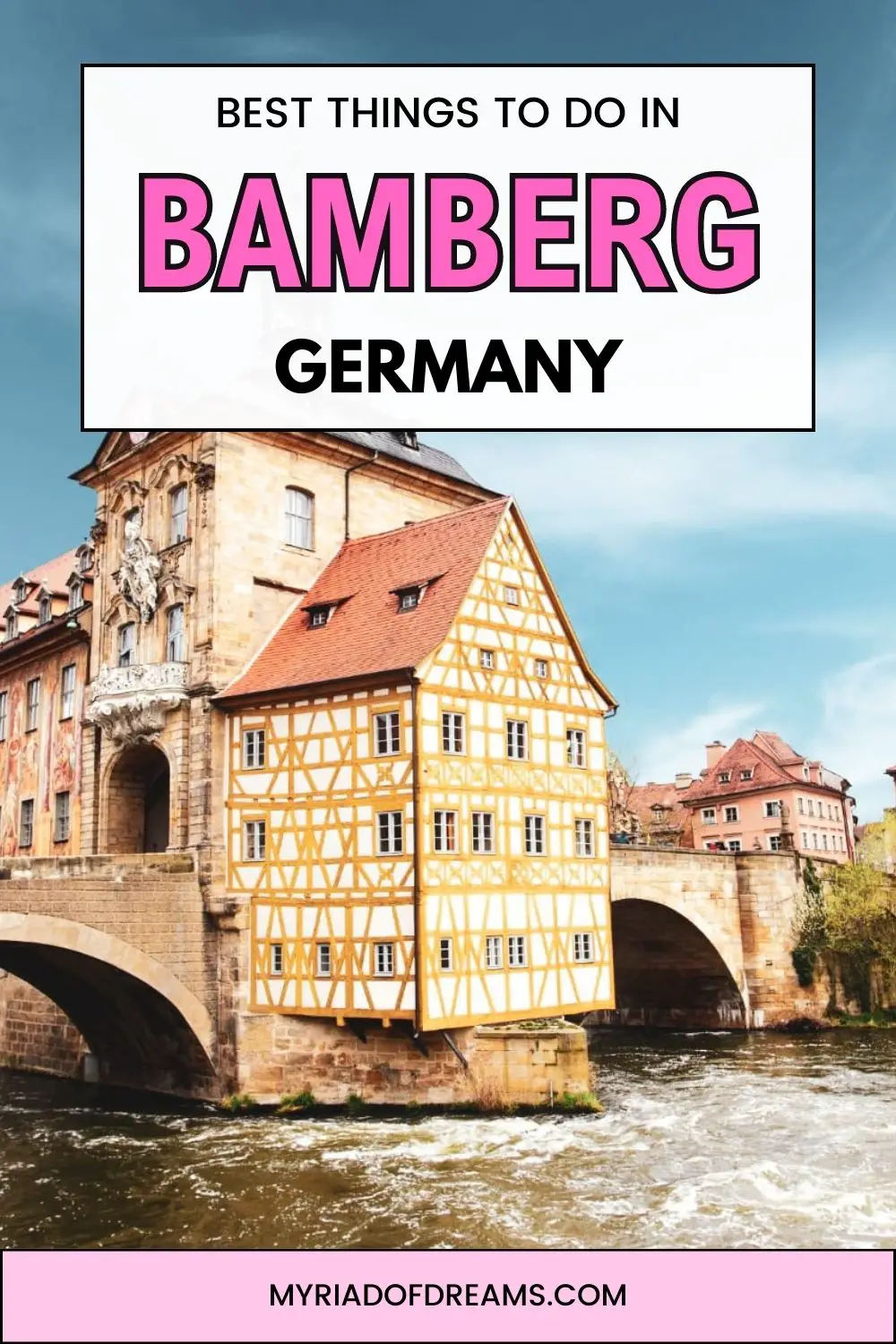
A short history of Bamberg
Bamberg is a charming city in Bavaria, Germany, with a rich history that dates back over a thousand years. Its well-preserved medieval architecture has earned it the nickname “Franconian Rome.”
The story of Bamberg began in the 10th century when the first settlement was established on seven hills, similar to Rome. During the Middle Ages, Bamberg became a prosperous trading center and generated wealth which allowed for the construction of splendid palaces and townhouses, many of which still exist today in the UNESCO World Heritage-listed Old Town.
Fun fact: Bamberg’s most notable landmarks is the Altes Rathaus, or Old Town Hall. Legend has it that the bishop, who held authority over the land, refused to grant the townspeople of Bamberg any space. Undeterred, the clever residents constructed the town hall on an artificial island in the middle of the Regnitz River. This ingenious approach allowed them to bypass the bishop’s restriction and create a remarkable landmark that continues to fascinate visitors today.
In more recent history, Bamberg suffered some damage during World War II, but its historical core remained remarkably intact. Efforts were made to restore and preserve the city’s architectural treasures, ensuring that Bamberg retains its medieval charm.
Today, Bamberg is a popular tourist destination, where visitors can immerse themselves in the past while enjoying the beauty and culture of modern-day Bavaria.
How to reach Bamberg
To reach Bamberg you have the option to travel by both train and road.
Nuremberg to Bamberg:
– By train: Trains run regularly between Nuremberg and Bamberg, and the journey takes approximately 30-40 minutes. You can check the schedules and purchase tickets from Deutsche Bahn’s website or at the train station.
– By road: The distance between Nuremberg and Bamberg is around 60 kilometers, and the journey takes about an hour by car. You can take the A73 highway, which connects the two cities.
Munich to Bamberg:
– By train: Trains operate between Munich and Bamberg, and the journey takes around 2 to 2.5 hours.
– By road: The distance between Munich and Bamberg is approximately 230 kilometers, and the journey takes around 2.5 to 3 hours by car. You can take the A9 highway, which connects the two cities.
Frankfurt to Bamberg:
– By train: There are no direct trains from Frankfurt to Bamberg, so you would need to make a transfer in Nuremberg. The total travel time can vary, but it generally takes around 3 to 4 hours.
– By road: The distance between Frankfurt and Bamberg is approximately 250 kilometers, and the journey takes around 2.5 to 3 hours by car. You can take the A3 and A73 highways, which connect the two cities.
Please note that train schedules and road conditions can vary, so it’s always a good idea to check for any updates or changes before your journey.
Guided tours in Bamberg
Exploring this UNESCO World Heritage Site on your own can be overwhelming, but fret not! Taking a guided tour in Bamberg is the perfect way to unlock its secrets and immerse yourself in its rich heritage.
Led by knowledgeable guides, these tours provide a captivating journey through Bamberg’s cobblestone streets, medieval architecture, and enchanting river views.
Whether you’re a history enthusiast, a lover of art and architecture, or simply a curious traveler, a guided tour in Bamberg promises an unforgettable experience filled with fascinating stories and hidden gems waiting to be discovered.
Best things to do in Bamberg
Bamberg Old Town Hall
The Bamberg Old Town Hall is a remarkable and iconic attraction that holds great historical and architectural significance. It is situated on an island in the middle of the Regnitz River, creating a picturesque setting.
This unique half-timbered building, constructed in the 15th century, stands out as one of the most distinctive landmarks in Bamberg.
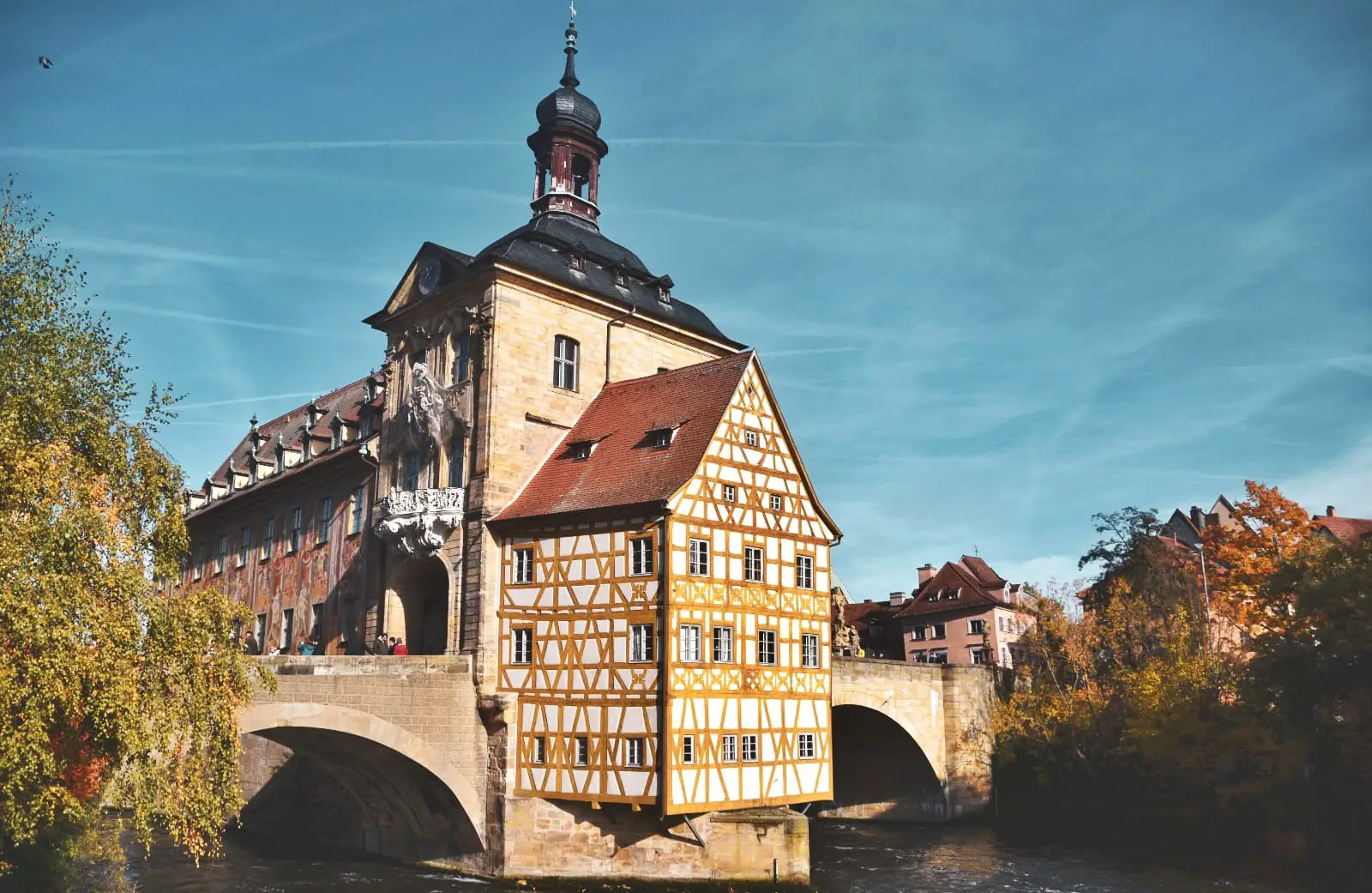
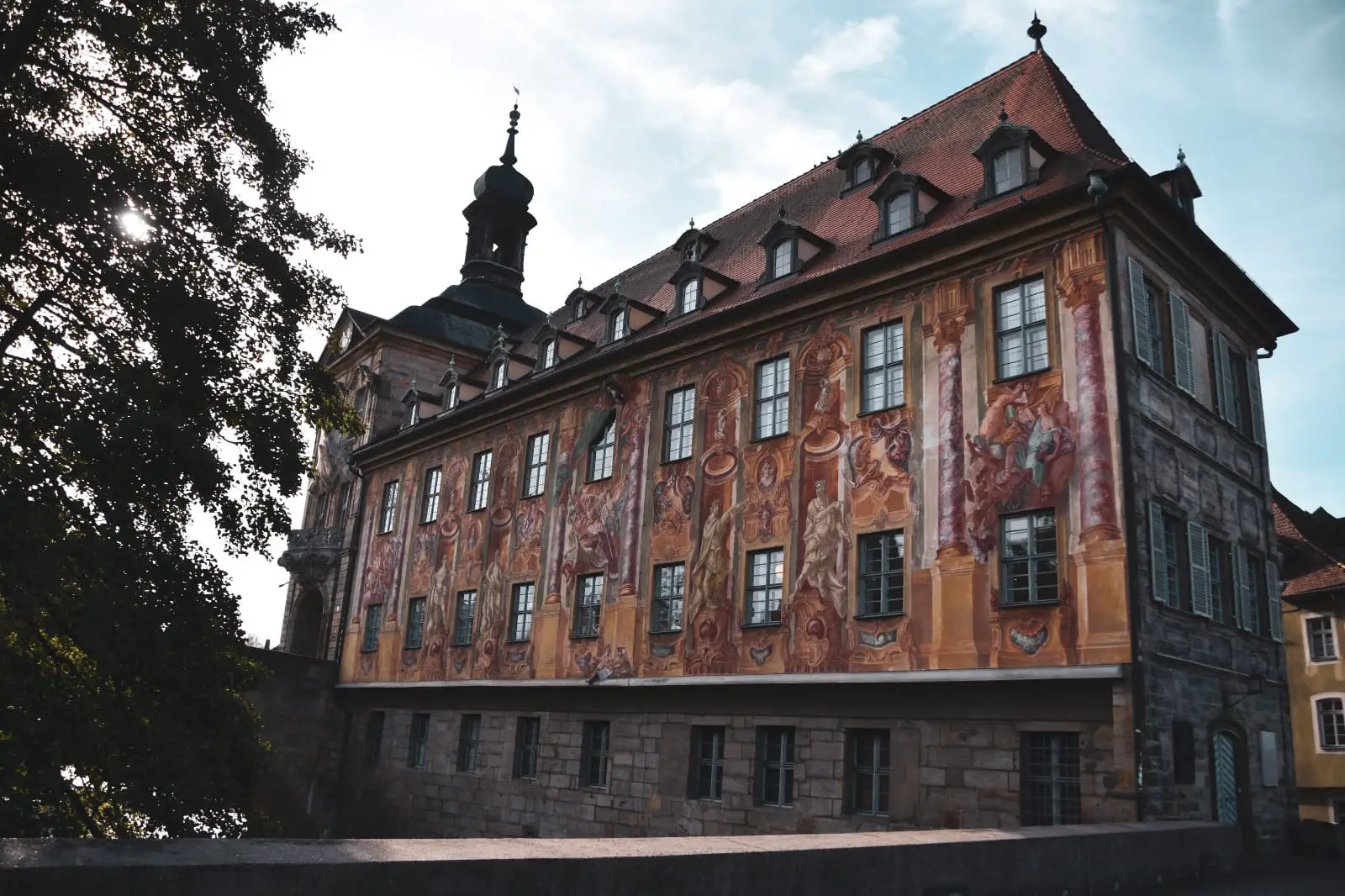
The building’s most captivating feature is its frescoes, which cover the entire exterior. These vibrant paintings depict scenes from local legends, historical events, and religious motifs. Moreover, the location of the Old Town Hall adds to its charm.
Situated on an island, it offers stunning views of the surrounding river and bridges. You can take a leisurely stroll along the riverbanks, enjoying the tranquil atmosphere and capturing memorable photos of the building’s striking facade reflected in the water.
Little Venice
Bamberg’s Little Venice is famous for its quaint and colorful fishermen’s houses that line the banks of the Regnitz River. This area earned its name “Little Venice” due to its resemblance to the romantic canals and houses of the famous Italian city.
The primary reason tourists flock to Little Venice is for its enchanting ambiance. The rows of houses with their vibrant facades create a postcard-perfect scene that exudes charm and character.
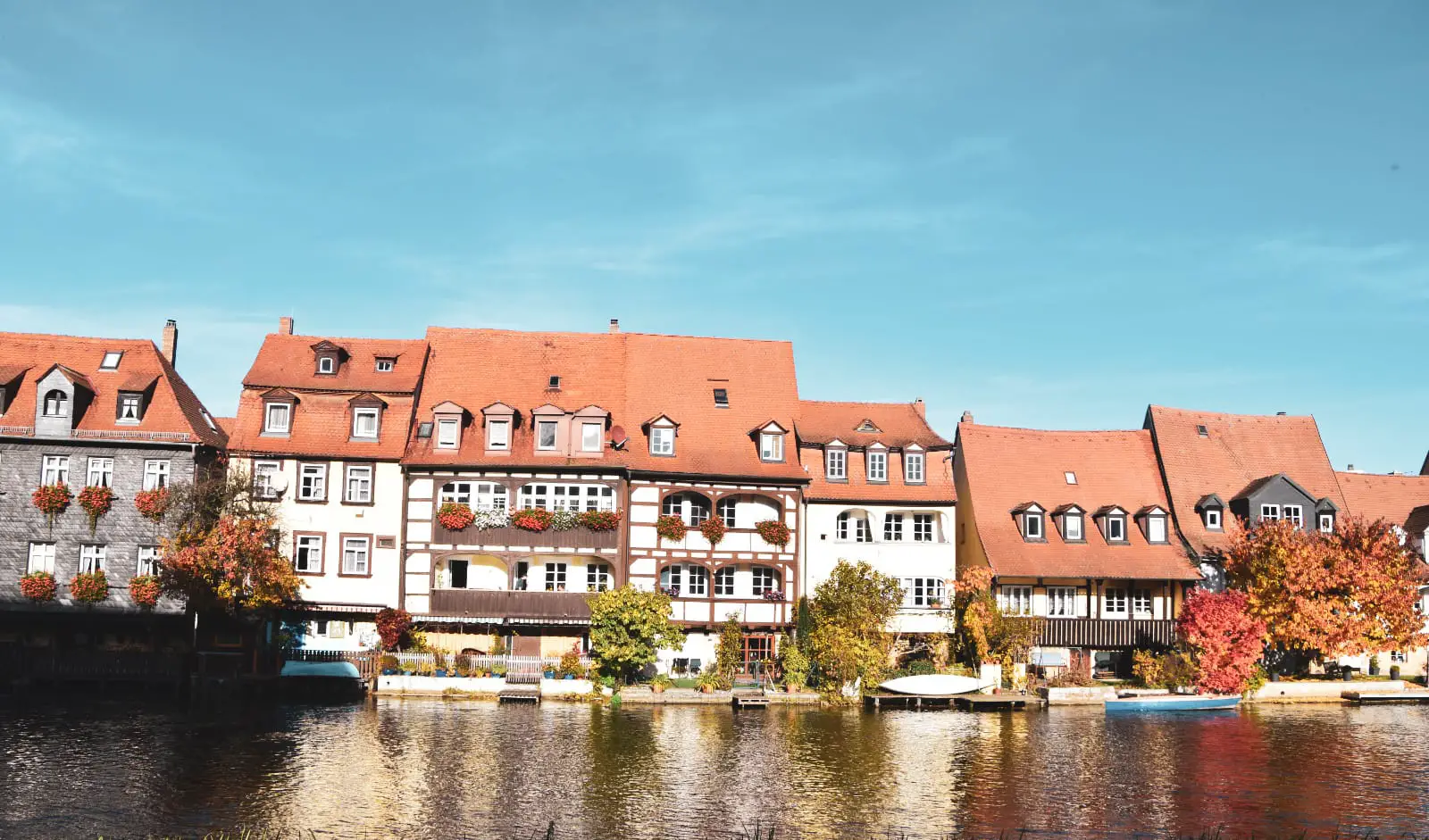
Additionally, Little Venice is home to cozy cafes, charming restaurants, and beer gardens where you can enjoy a delightful meal or a refreshing drink while taking in the picturesque scenery.
Whether you’re seeking a romantic stroll, an opportunity to capture beautiful photographs, or a place to relax and enjoy the ambiance, a visit to Little Venice is highly recommended.
Outdoor Art
The city is known for its vibrant and creative display of street art, sculptures, and murals throughout its streets and squares.
One of the reasons why outdoor art in Bamberg is famous among tourists is its ability to transform the urban landscape into an open-air gallery. As you explore the city, you easily encounter unexpected art installations, colorful murals, and intriguing sculptures.
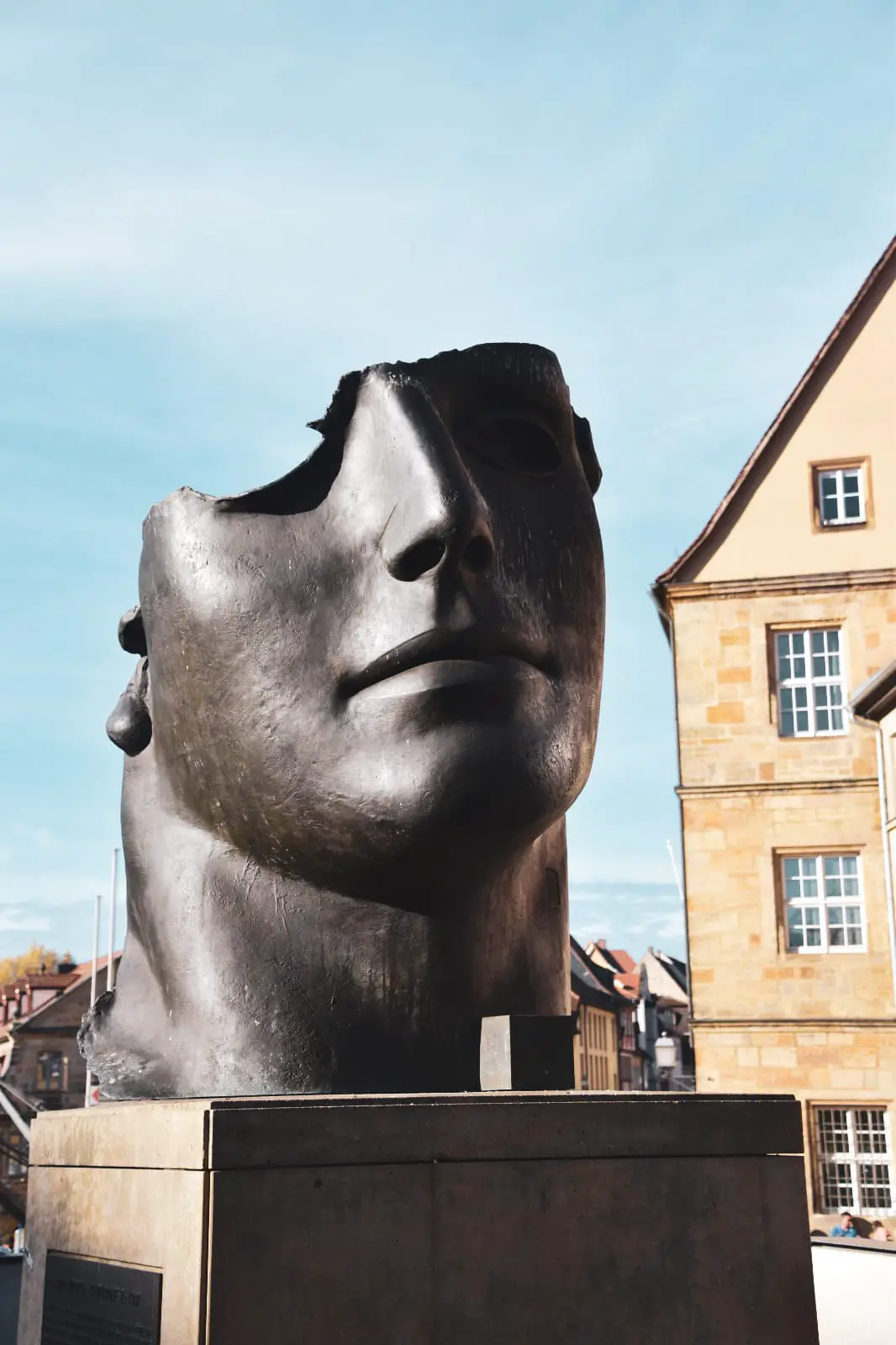
Beyond their aesthetic appeal, the outdoor art pieces in Bamberg often have deeper meanings or narratives associated with them. They may reflect local history, social issues, or express the creativity and imagination of the artists.
As you wander through the streets, you’ll stumble upon hidden artworks tucked away in unexpected places.
Smoked Beer
One of Bamberg’s most distinctive and famous offerings is its smoked beer, locally known as “Rauchbier.” This unique style of beer has a long-standing tradition in the region and is a significant part of Bamberg’s cultural and culinary heritage.
What sets smoked beer apart is the method used to achieve its distinct smoky flavor. During the malting process, the barley grains are dried over an open flame, typically using beechwood. This imparts a smoky aroma and taste to the beer, giving it a character unlike any other.
The smoky flavor of Bamberg’s beer can be an acquired taste, but it is an experience worth trying for beer enthusiasts and adventurous palates.
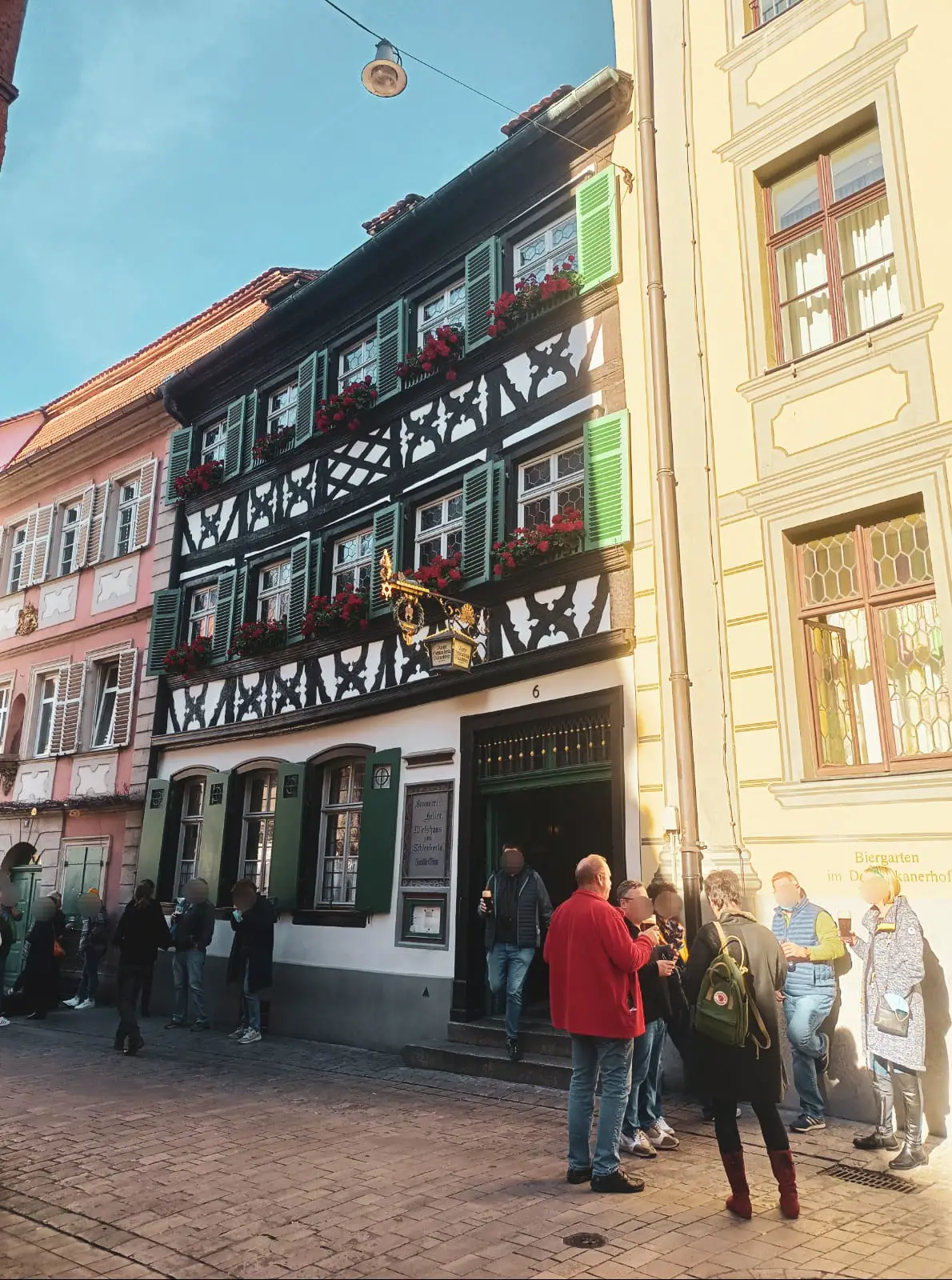
Bamberg is home to several breweries that produce smoked beer, with Schlenkerla Brewery being the most famous and revered.
This historic brewery has been producing smoked beer since the 17th century and remains a symbol of Bamberg’s brewing heritage. You can explore the brewery, learn about the beer-making process, and, of course, sample the smoky brews.
New Residence.
The New Residence in Bamberg is a renowned attraction.This magnificent palace, built in the 17th century, served as the residence of Bamberg’s prince-bishops.
The palace displays a blend of Renaissance and Baroque styles, featuring intricate details, grand facades, and elegant courtyards. The architectural splendor and beautifully landscaped gardens contribute to its overall grandeur.
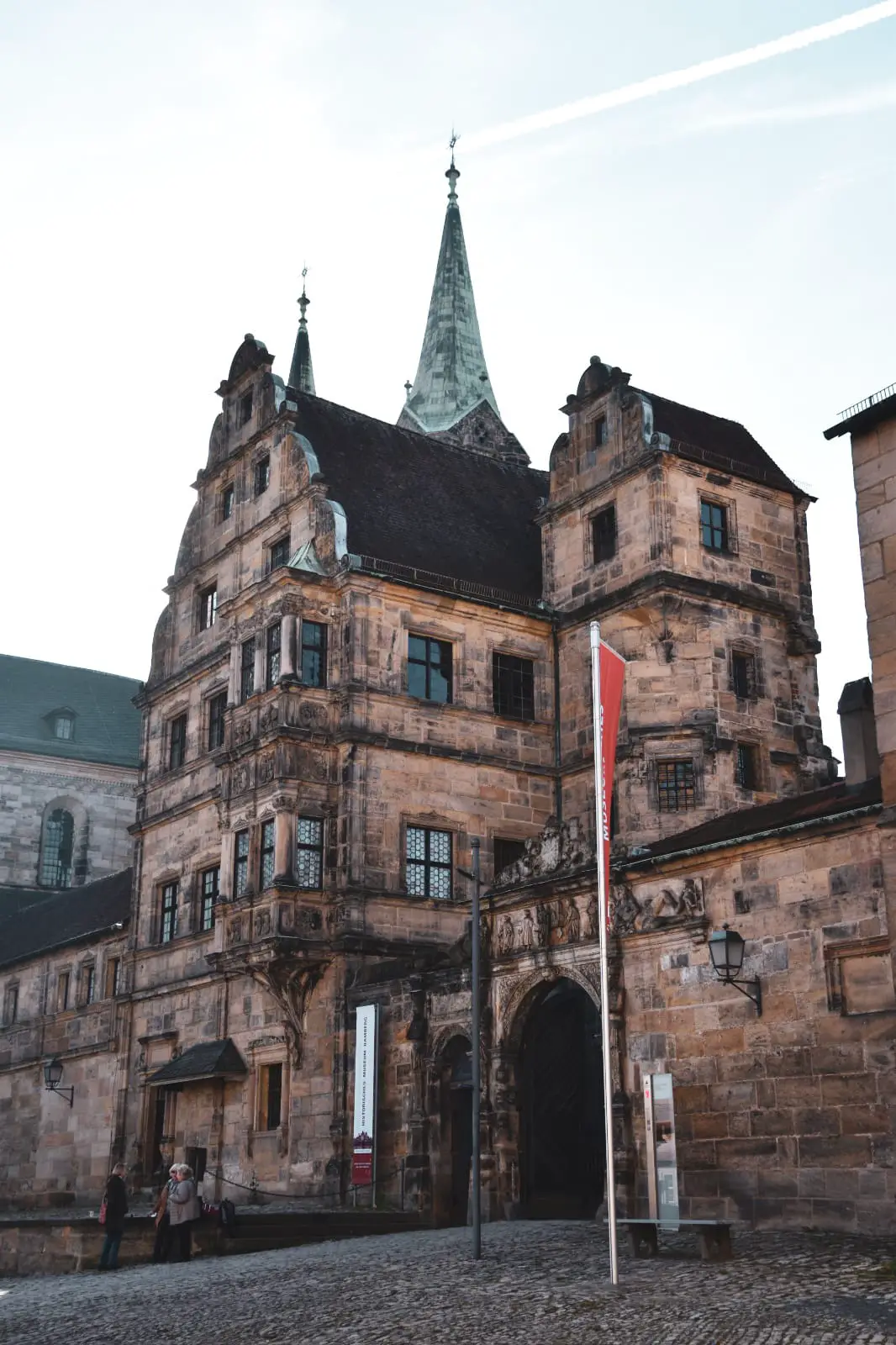
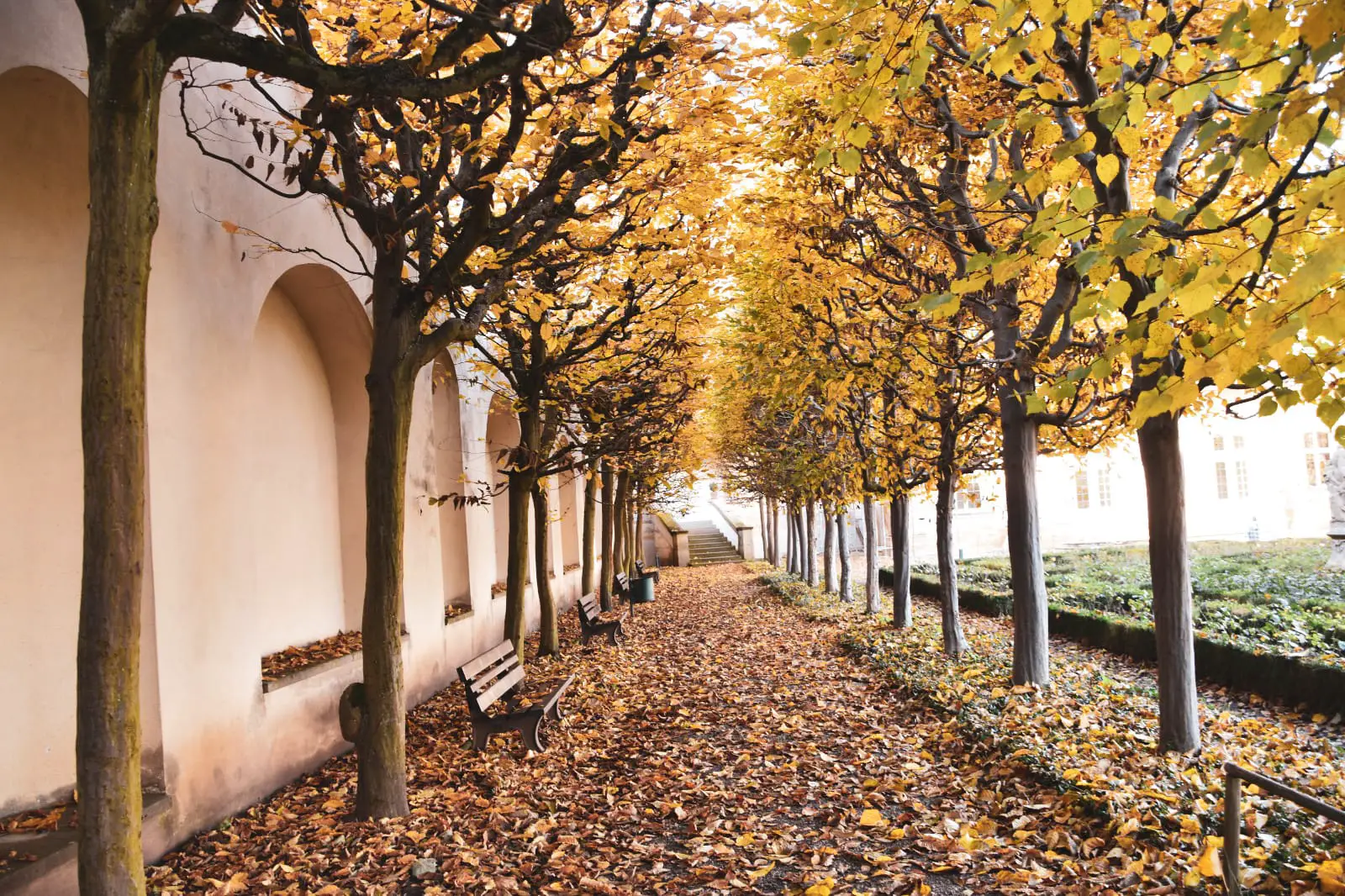
The palace houses several museums, including the Historical Museum and the State Gallery. The Historical Museum takes visitors on a journey through Bamberg’s history, displaying a wide range of artifacts, historical documents, and artworks. The State Gallery, on the other hand, features a rich collection of paintings, sculptures, and decorative arts from various periods.
Alte Hofhaltung
Alte Hofhaltung is a historic courtyard complex that served as the residence of Bamberg’s prince-bishops.
Apart from being famous amongst tourist for its historical importance, It is also popular amongst Movie buffs, as it has also served as a backdrop for various movies.
The Alte Hofhaltung featured in the movie “The Three Musketeers” (2011).
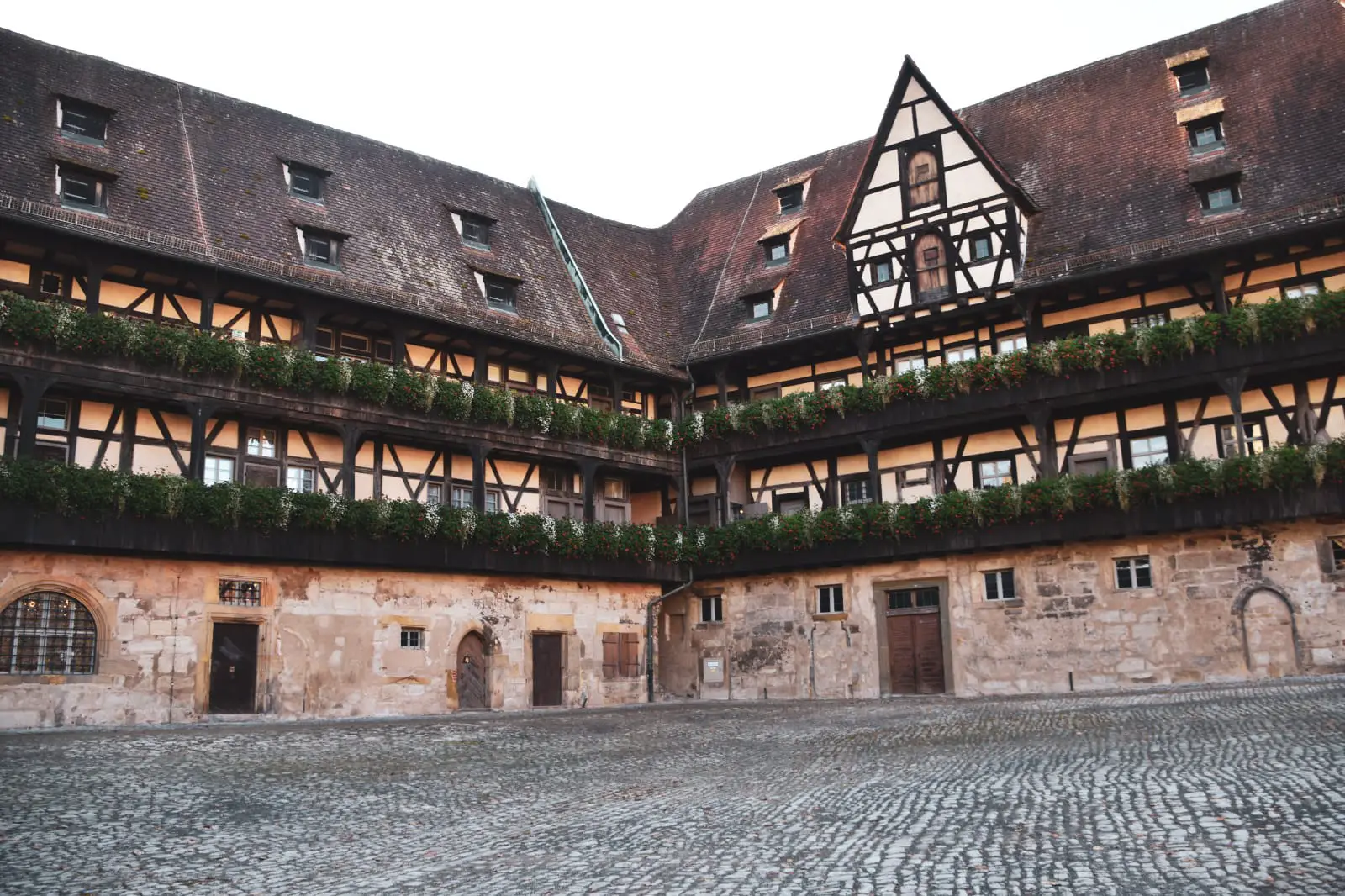
Additionally, the Alte Hofhaltung appeared in the German film “The Dark Valley” (2014). The atmospheric and secluded nature of the complex perfectly suited the film’s dark and mysterious storyline, providing a fitting backdrop for the unfolding drama..
Recognizing the Alte Hofhaltung from these films provide an exciting connection to the world of movies and the remarkable historical complex in Bamberg.
Bamberg Cathedral
Bamberg Cathedral, also known as the Bamberger Dom, is a significant landmark and a popular attraction for tourists visiting the city. It is renowned for its rich history, stunning architecture, and cultural and religious importance.
The cathedral showcases a mix of Romanesque and Gothic styles, with intricate details, soaring towers, and beautifully carved sculptures. Its imposing presence dominates the city skyline and captivates visitors with its grandeur.
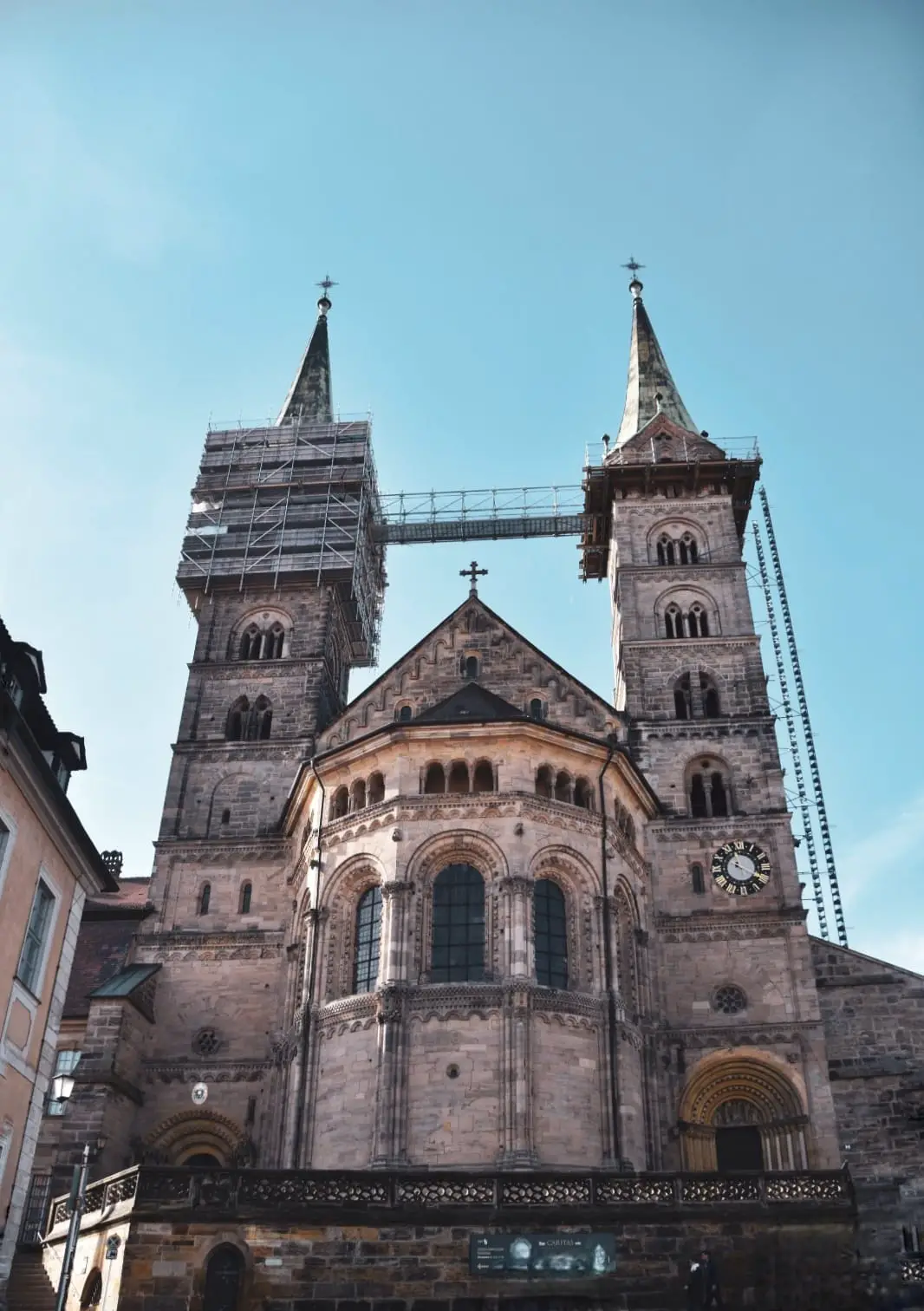
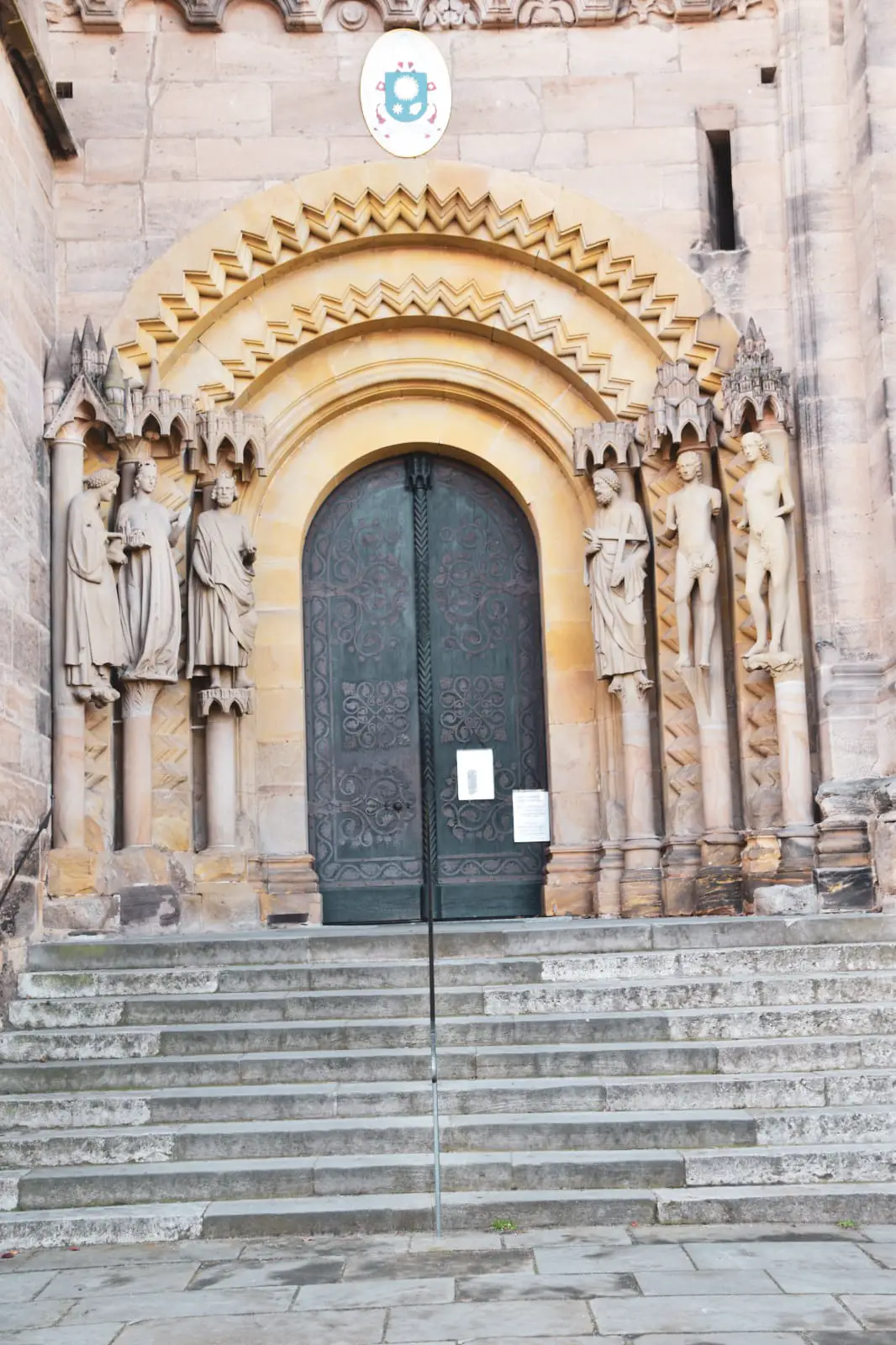
The cathedral is home to the tombs of significant historical figures, including Emperor Henry II and his wife, Empress Cunigunde, who were both canonized as saints. These tombs attract pilgrims and history enthusiasts alike, seeking to pay their respects and explore the connections between religion, power, and the past.
Within the cathedral you can admire the beautiful stained-glass windows, marvel at the intricate stone carvings, and explore the chapels and crypts that hold centuries-old artifacts and relics.
St. Michael’s Monastery (Kloster St. Michael)
St. Michael’s Monastery, also known as Michaelsberg Abbey, is a prominent landmark in Bamberg that holds both historical and cultural significance. This Benedictine monastery, perched on a hill overlooking the city, offers visitors a captivating experience.
The monastery complex includes the St. Michael’s Church, which showcases magnificent frescoes and intricate stuccowork. Take some time to explore the peaceful grounds and soak in the monastery’s serene atmosphere.
The hilltop location provides breathtaking panoramic views of the city and the surrounding landscape.
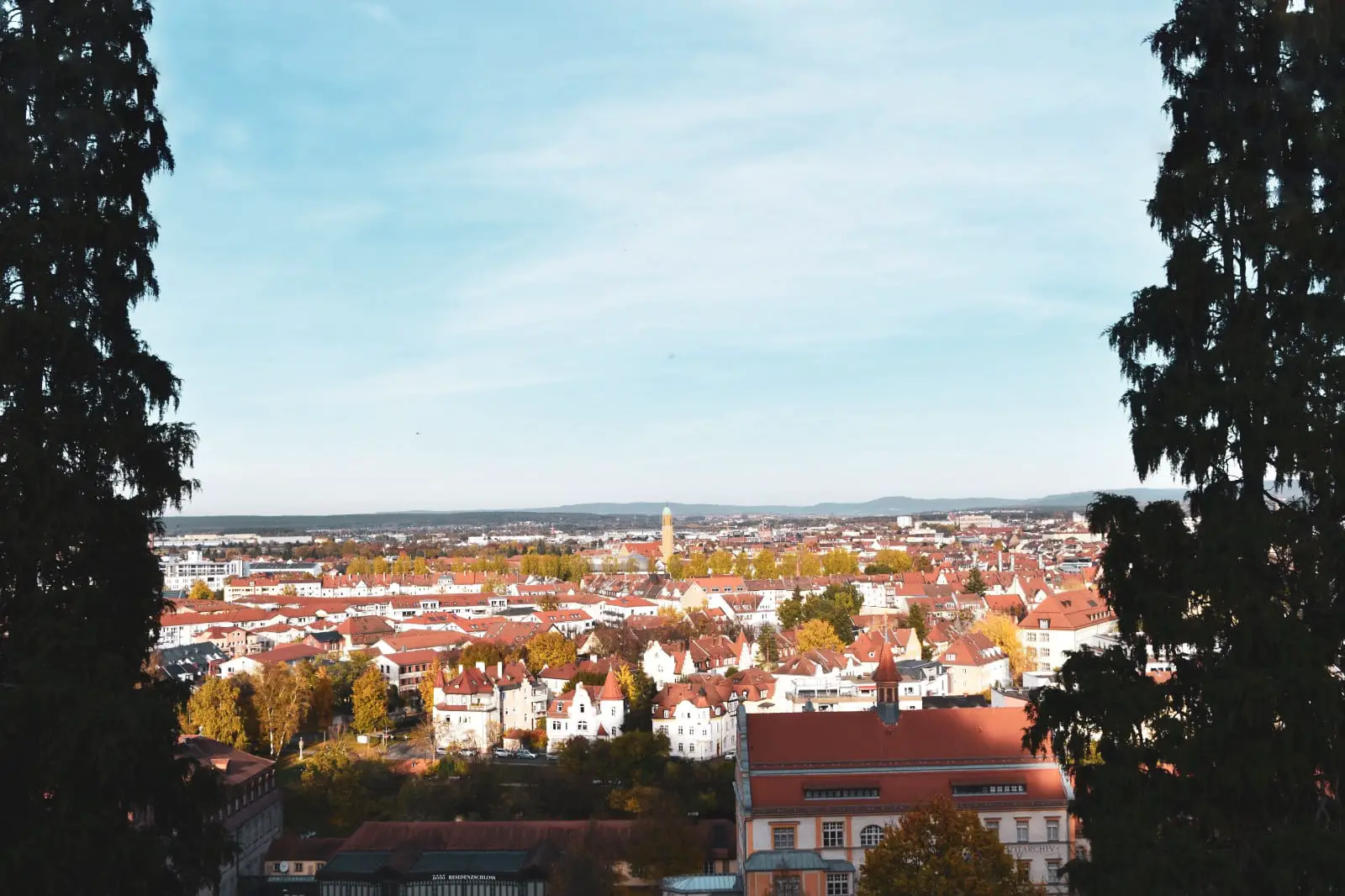
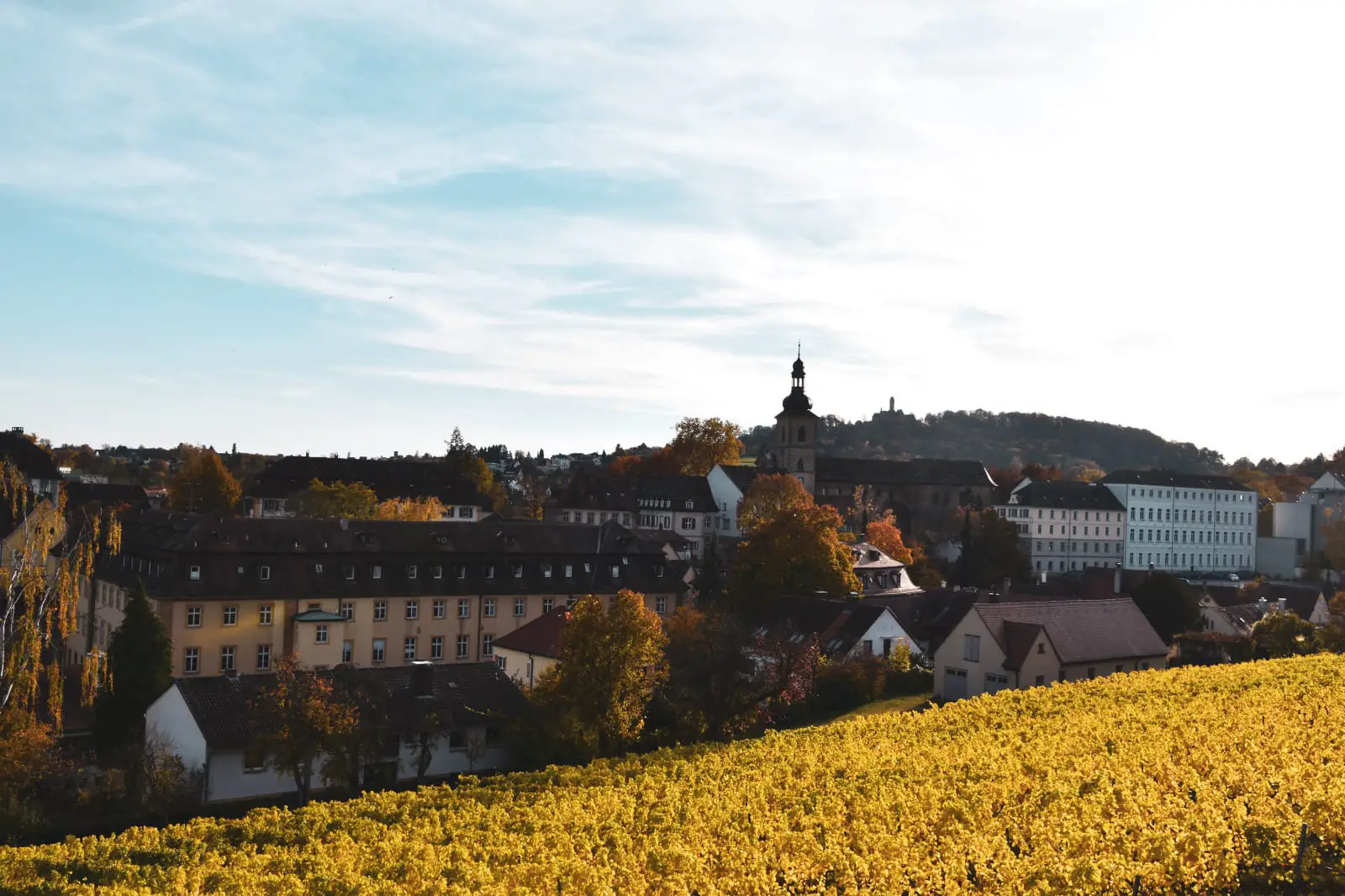
The peaceful and serene atmosphere of the monastery allows visitors to escape the hustle and bustle of the city and find solace in its tranquil surroundings.
Whether it’s appreciating the artistic details, enjoying panoramic views, or seeking spiritual solace, St. Michael’s Monastery has a lot to offer.
Food in Bamberg
Bamberg offers a variety of dining options, ranging from traditional Franconian cuisine to international flavors. Here are a few recommendations.
Schlenkerla Brewery: In addition to its renowned smoked beer, Schlenkerla Brewery also serves delicious Franconian dishes. Try their hearty Schäuferla (pork shoulder) or traditional sausages paired with their signature beer.
Zum Sternla: It is a popular and well-known restaurant in Bamberg, renowned for its traditional Franconian cuisine and charming atmosphere. If you are craving for sausages, roasted meats, or potato dishes, then look no more and head straight to Zum Sternla.
Fäßla Brewery: It is another historic brewery in Bamberg, which offers traditional beers on tap, paired with delicious Franconian. The rustic ambiance, friendly service, and a wide selection of beers make Fäßla Brewery a perfect place to end your day trip.
Vegan Food in Bamberg
You do not eat meat? Don’t worry, Bamberg has many vegan and vegetarian friendly restaurants. Here are a few recommendations.
Paprika Vegan Bistro: Whether you’re a vegan, vegetarian, or simply looking to explore plant-based cuisine, Paprika Vegan Bistro in Bamberg offers a range of options to satisfy your cravings.
Café Rondo: Café Rondo is a charming vegetarian café located in Bamberg, Germany. It offers a variety of vegan options and is known for its cozy atmosphere and delicious food, although it does not exclusively cater to vegans. They serve breakfast, lunch, and homemade cakes, with vegan choices clearly marked on their menu.
Spitzrein Café: Looking for small treats, coffee, and cake? Spitzrein café offer a selection of vegan and vegetarian options. Their Russischer Zupfkuchen (Russian pluck cake) is a must try.
More things to do in Germany
Neuschwanstein Castle: Day trip from Munich
A complete guide to visiting Eltz Castle (aka Burg Eltz) in Germany

